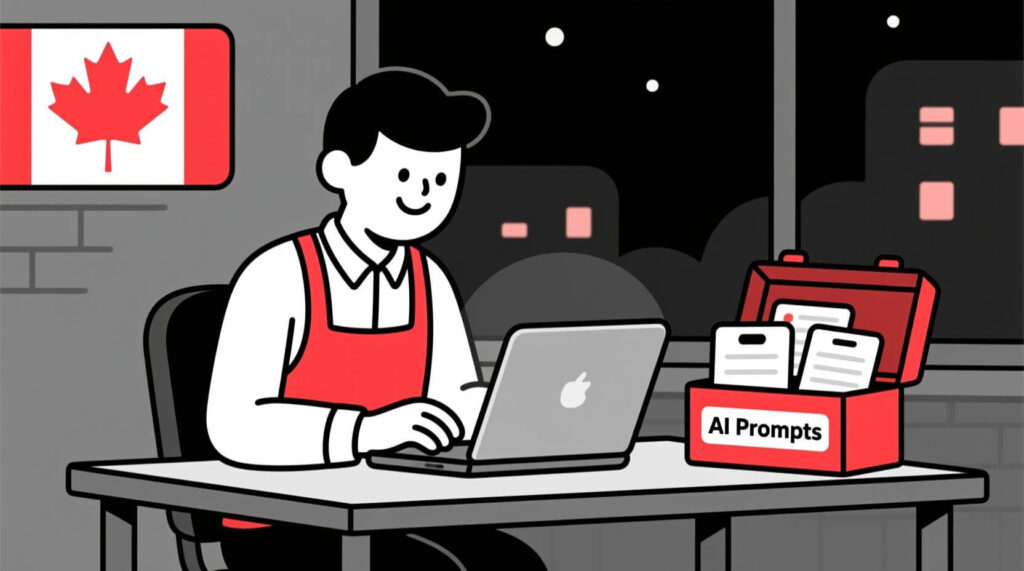
You’re in the middle of a board meeting when the chair turns to you and says, “We really should have a formal social media policy in place. Can you draft something for our next meeting?”
For a busy Executive Director, that simple request lands with a thud. It feels like legal homework, not the mission-driven work you live for. You don’t know where to start, hiring a lawyer for every internal document is completely out of the budget, and the fear of “getting it wrong” is paralyzing.
So, it gets pushed to the bottom of the to-do list.
But here’s the thing: formal policies are not just bureaucratic busywork. They are the suit of armour that protects your mission. A lack of clear, written policies is a massive source of risk. In fact, a staggering 80% of Directors and Officers (D&O) insurance claims against non-profits relate to wrongful termination or discrimination, issues that often stem from a lack of clear HR policies. For organizations in Ontario, the deadline to update governing documents under the Not-for-Profit Corporations Act (ONCA) is fast approaching, making inaction a direct threat to compliance.
What if you could eliminate the fear of the blank page and produce a solid first draft of any policy in about 30 minutes?
This is where AI shines. It can act as your expert policy drafting partner—a tool that instantly creates a structured, comprehensive, and relevant first draft, eliminating 90% of the initial effort. This guide will give you the framework and the exact prompts to turn a week of stress into a single focused session.
Your Professional Workflow: AI Draft, Human Wisdom
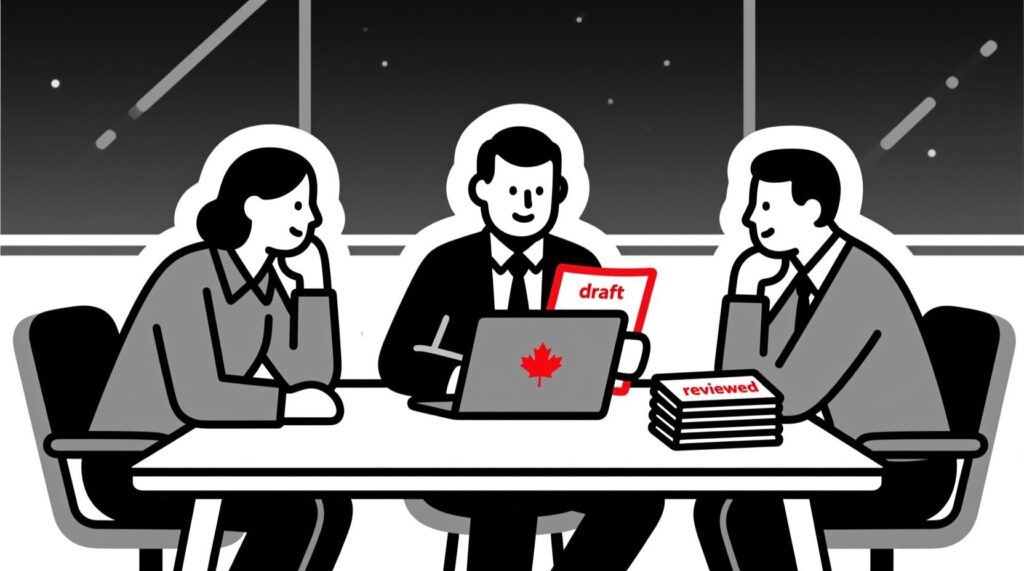
Let’s reframe this process. Using AI for policy drafting isn’t about cutting corners; it’s about being strategic with your most limited resource: time. This is the new professional workflow. An AI-generated draft is a powerful starting point, not a final legal document. Think of the AI as a brilliant junior associate who does all the heavy lifting on research and structure. But you, your board, and, when necessary, a legal professional, are the senior partners who must review, refine, and approve the final work. This process makes you look prepared and efficient, not lazy.
Where Do I Even Start? Your Non-Profit Policy Priority Checklist
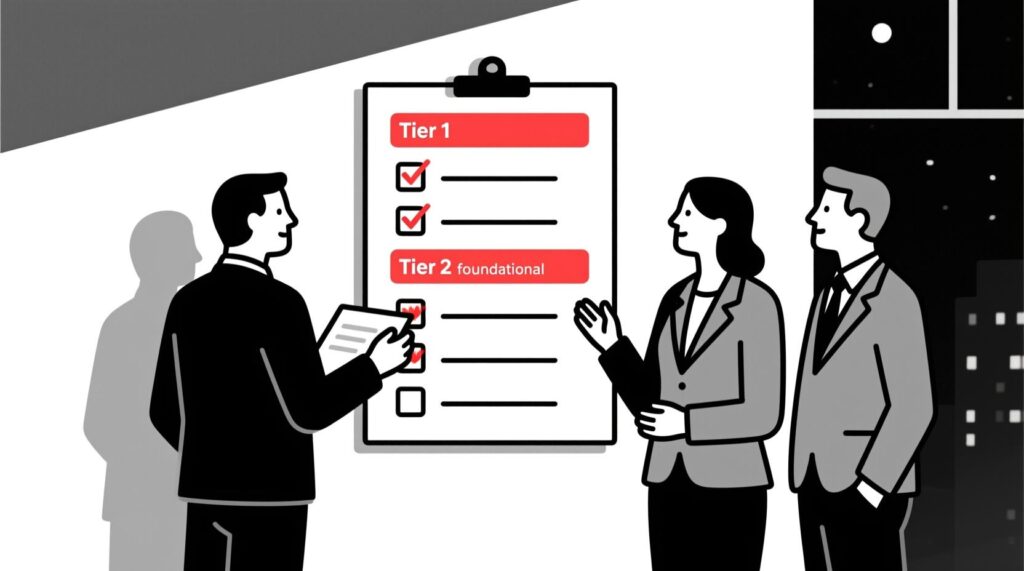
The biggest challenge isn’t just how to write a policy, but knowing which ones you need first. Here’s a prioritized list based on best practices from across the Canadian non-profit sector.
Tier 1: The Non-Negotiables (Protect the Core) These policies address the highest areas of legal, financial, and governance risk. Start here.
- Conflict of Interest Policy: Essential for your board and leadership to ensure decisions are made solely in the organization’s best interest.
- Financial Management & Internal Controls: Crucial for preventing fraud, ensuring accountability, and maintaining trust with funders and the CRA. This includes things like expense claims and cheque signing authority.
- Core HR Policies (if you have staff): Covers the basics required by provincial Employment Standards Acts to ensure fair and legal treatment of employees.
Tier 2: The Foundational Four (Build a Strong Culture) Once the core risks are covered, these policies help define your operations and protect your people.
- Volunteer Management & Screening Policy: Protects your clients and your organization by formalizing how you engage with your invaluable volunteers, a standard recommended by Volunteer Canada.
- Anti-Harassment & Anti-Discrimination Policy: A must-have for creating a safe and inclusive environment for everyone—staff, volunteers, and clients alike.
- Privacy & Confidentiality Policy: Outlines how you handle sensitive information, which is critical for maintaining trust with donors and clients and aligning with the principles of laws like PIPEDA.
- Whistleblower Protection Policy: Creates a safe channel for people to report wrongdoing without fear of retaliation, fostering a culture of accountability.
The 4-Step Framework for AI-Powered Policy Drafting
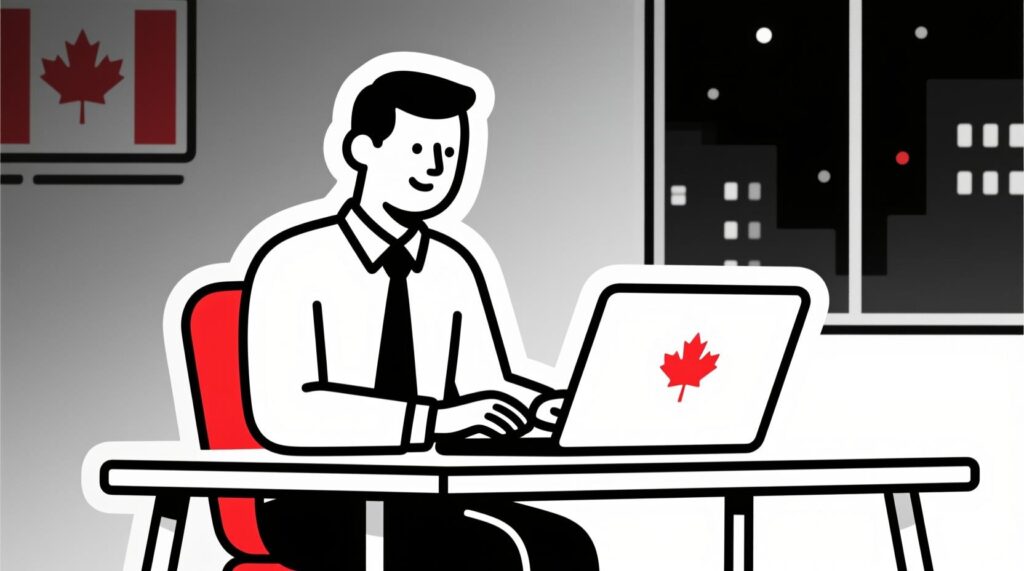
Now that you know where to start, here’s the repeatable process for tackling any policy on your list.
Step 1: Define Your “Must-Haves” Before you write a prompt, connect the policy to your purpose. Jot down the 3-5 non-negotiable points it must cover, and link them to your organization’s core values. For a social media policy, it might be:
- Value: Respect -> Rule for respectful communication online.
- Value: Trust -> A clear confidentiality clause.
- Value: Accountability -> Who has posting authority.
Step 2: Craft a “Master Prompt” A great prompt has four ingredients:
- Role: “Act as a governance expert…”
- Context: “…for a Canadian non-profit that runs after-school programs.”
- Task: “Draft a comprehensive Volunteer Screening policy…”
- Constraints: “…based on the best practices from Volunteer Canada.”
Step 3: Iterate and Refine Your first draft is just the beginning. Use simple, conversational follow-ups to shape it:
- “That’s a good start, but can you make section 2 clearer for someone without an HR background?”
- “Please add a clause that specifically addresses the use of personal cell phones when working with clients.”
Step 4: Human Review and Approval This is where leadership happens. Take the 90%-finished AI draft and engage your team. The AI provides the structure; you provide the wisdom and the final sign-off.
Prompt Templates for 3 Essential Non-Profit Policies
Here are three master prompts to get you started on your Tier 1 policies.
1. Conflict of Interest Policy (for Board Members)
"Act as a governance expert for a Canadian non-profit registered under the Canada Not-for-profit Corporations Act. Draft a clear and concise Conflict of Interest policy for our Board of Directors. The policy must define what constitutes a conflict of interest (financial, personal, or otherwise), outline the mandatory procedure for directors to disclose any potential conflicts, and state the requirement for a director to recuse themselves from voting on any matter where they have a declared conflict."2. Social Media Policy
"Act as a communications and PR consultant for a small Canadian charity. We need a Social Media Policy for all staff and volunteers. The policy should cover guidelines for posting on official channels, rules regarding the discussion of our non-profit on personal social media accounts, a strict clause on maintaining client confidentiality online, and identify who has the authority to speak on behalf of the organization."3. Basic Donor Privacy Policy
"Act as a privacy officer for a Canadian non-profit. I need to draft a simple Donor Privacy Policy that is inspired by the 10 fair information principles of PIPEDA. The policy should state that we collect donor information for processing donations and sending updates, that we do not sell or trade donor lists, and that we use reasonable safeguards to protect their information. Keep the language simple and easy for a donor to understand."Canadian AI Guy’s Pro Tip: Is the AI draft sounding too generic or corporate? Use a follow-up prompt to inject your organization’s unique DNA. Try this: “Now, rewrite this draft. Infuse it with our core values of compassion, empowerment, and community. Make the tone less like a legal document and more like a supportive guide for our team.” This is how you turn a generic template into your policy.
Conclusion: From Paperwork to Protection
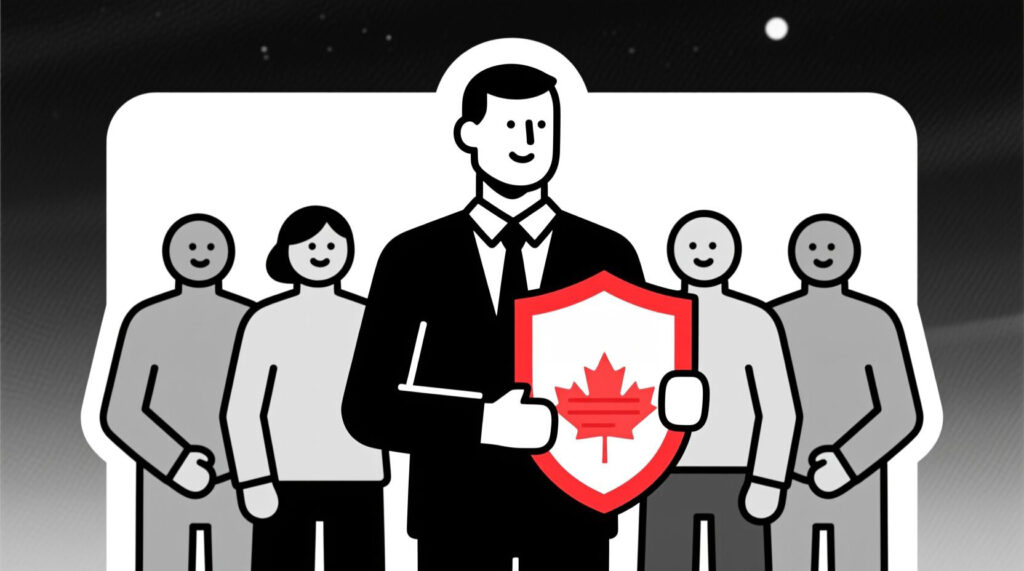
You now have a priority list, a repeatable process, and a powerful co-writer to help you build the suit of armour your mission deserves.
This isn’t just about ticking a box for your board. Creating clear policies is a fundamental act of leadership. It protects your mission, your team, and the people you serve. It’s how you build a stronger, more resilient organization, one clear document at a time.
Look at the checklist you started. Pick one policy, and give this 30-minute method a try this week. Turn that blank page into peace of mind.
Canadian AI Guy’s Pro Tip: Developing policies is one thing; implementing them is another. If you need help training your team on new guidelines or integrating AI into your operational workflows, our AI Training Programs are designed to turn policy into practice.
People Also Ask
1. What is the most important policy a small non-profit must have?
While it varies, most experts agree that a Conflict of Interest policy for the board and a set of basic Financial Management policies are the most critical starting points for ensuring good governance and protecting against risk.
2. Can AI help me update an existing policy to be more comprehensive?
Absolutely. You can paste your existing policy into the AI tool and ask it to review and improve it. For example: “I’ve pasted our outdated social media policy below. Please update it to include modern best practices, add a section on the use of generative AI, and make the tone more professional.”
3. How do I make sure the AI includes Canadian-specific legal information in the draft?
The key is to specify it in your prompt. Include phrases like “for a Canadian non-profit,” “in compliance with Ontario’s Employment Standards Act,” or “inspired by PIPEDA” to guide the AI to generate more relevant content. However, always have a human verify legal specifics.
4. Is it safe to put our internal organizational details into a public AI tool?
Treat public AI tools like a public forum. Never input sensitive, confidential, or personally identifiable information. Use them for drafting general policies and procedures, not for discussing specific internal cases or private data.
5. The AI-generated policy draft sounds too corporate and robotic. How can I fix it?
Use a follow-up prompt to inject your brand voice! As we covered in the Pro-Tip, simply ask the AI to rewrite the draft using your specific core values and desired tone (e.g., “supportive,” “collaborative,” “community-focused”).


